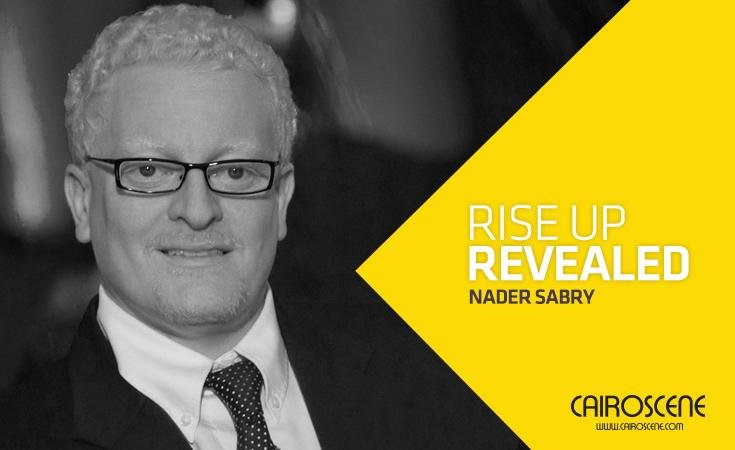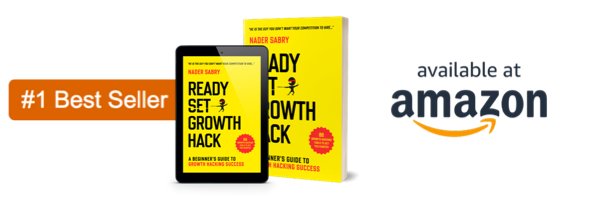THE ENTREPRENEUR WHO BROUGHT SPACE TECH TO EARTH
In our second collaboration with #RiseUp15, we speak to ‘space-preneur’ Nader Sabry, who enlisted the aid of NASA and used space technology to create his landmark product; a physiological prayer mat.
17/11/2015 08:0

What’s it like to invent everyday products using NASA’s technology? Nader Sabry calls it space-preneurship; the way he defines it is even more exciting: “Working with space relates to one word: hope. It’s far-reaching, it’s very difficult, but it’s not impossible. And this massive desire can only inspire others,” he says.
A tech entrepreneur and a mentor for young changemakers, Sabry used space technology to disrupt an industry that hadn’t had innovation in 1400 years: health and wellness Muslim lifestyle. TIMEZ5, his landmark product, is a physiological prayer mat that incorporates space technology originally used in NASA astronaut suits to ensure the reduction of microbes and help maintain better posture.
Get Growth Thinking – Think, Design, Growth hack
newly launched book by author Nader Sabry about growth hacking design methodology available in ebook, paperback, hardcover, and audio on popular platforms like Amazon.com and Google Books / Google Play and Apple.
Learn more today by visiting www.MyGrowthThinking.com
This new methodology has been used by thousands of the top growth hackers globally, helping supercharge the growth of their own organizations and their clients achieve super-growth results not achievable by many organizations. Growth thinking is a fast, easy, and simple way to prototype growth hacks. This enables growth by visualizing a growth hack in abstract and then detailing them into a systematic approach. This makes it easy to develop and improve growth hacks and generate new, better growth hacks.
Get started today with several support resources, including quick start, getting started, and advanced training online courses to help you supercharge your organizations’ growth whether your is a startup, a Fortune 500, a government, or the next big unicorn.
Sold in 35 countries, the company is the only innovative leader in a market worth $2 trillion in the Islamic economy. “We are the 43rdcompany to be space-certified as part of the technology arm of NASA,” Sabry tells CairoScene. Most companies using space tech, he explains, are heavily infrastructure related, but Timez5 is the first one to introduce it in people’s daily lives. “We are actually one of the most commercially viable space technologies, applying it to health, wellness, and lifestyle,” he adds.
The technology used in the prayer mats consists of antimicrobial coating, a layer that is usually used to protect astronauts from dust, fungus, bacteria, and other forms of harmful microbes. “We spent five years researching and understanding biomechanics. Those who meditate frequently, for example, acquire more flexibility in their knees, but that makes them more prone to knee disorders because of the ergonomics of the lifestyle around them, and chronic problems start to arise, so we are looking into how to solve that by using materials to improve posture and boost energy by increasing blood flow,” he explains.
Sold in 35 countries around the world, the mat is used not only by Muslim worshippers but also tens of thousands of customers in non-Muslim countries, such as Ukraine, Peru, and Singapore. “People of different meditating processes are using it as well, as the mat helps people to pray with a better posture and the anti-microbial technology helps protect the respiratory system and the skin,” Sabry says.
“Let’s say you have pain in your ankle; there is likely less blood circulation,” he explains; “so, usually you apply heat or cold to increase or reduce the blood flow. But, when the mat relieves pain and improves posture, it allows blood to move more regularly and feel more energetic.”
Why use a costly technology to solve everyday problems, some may ask. “Space tech is more widely used than you think. Think of GPS, for example, which was originally used to land satellites and is now a must for street navigation,” says the founder of a company awarded by Dubai’s Sheikh Mohammed Bin Rashid Al Maktoum.
“Space technology is just another part of technology and innovation, but the difference is that the variables are highly unknown; therefore, the way it is developed is more advanced. Unlike the Internet business, where you have a 25-year history of innovation, with space tech you start from zero in many cases. There is no deep and rich precedence to build upon. Therefore, the types of technology are at the frontier of innovation.”
Having to deal with challenges such as finding ways to ensure life on the moon, space technology scientists are not commonly found. When recruiting a team of researchers and developers, Sabry hired a former NASA scientist. “We have a core team and a network of experts, because it is difficult to have full time expertise in new areas; in some cases we collaborate or buy expertise,” he says.
A leading voice in applying innovation to meet the Muslim market’s needs, Sabry is a passionate advocate for inspiring youth to embrace space-preneurship. In 2014, he launched the Get2space.com initiative, partnering with the US Space Foundation to inspire 2 billion people to aspire to global peace through space technology.
In December 2014, Sabry led a keynote speech at the NASA Kennedy Space Centre, where he stressed the importance of innovation as a path for peace. “That’s what technology should be used for,” says this visionary businessman, who finds inspiration in the voice of the youngest and takes pleasure in listening to their ideas. “We want to send 2 billion people to space, to show them that there is hope at the end of the tunnel, and it lies in space tech. We want to prove that nothing is unreachable.”
The initiative, which received thousands of emails, offers youth a platform to expand their knowledge and interest in space-related technologies and initiatives. “We got tons of emails from youngsters telling us that they want to be an astronaut or an engineer and reach space. It reached the hearts and minds of youth in the Arab world; it became a channel for people to express their desires and dreams, people who want to become part of the space ecosystem,” he says, smiling.
“There is a very soft side to space technology, but it also plays a very important role in showing people that cutting-edge tech can help the world, such as the Canadian space arm, designed to move spare parts and grab things in space. That level of precision was adapted for complex operations, giving a lot of people hope.”
Sabry will be speaking at this year’s RiseUp Summit; for more information check out their Facebook page here or follow them on Instagram @riseupsummit.
https://cairoscene.co/Buzz/The-Entrepreneur-Who-Brought-Space-Tech-to-Eart
Get your copy of bestselling book
“Ready Set Growth Hack:
A beginners guide to growth hacking success”
Learn more about the author Nader Sabry


